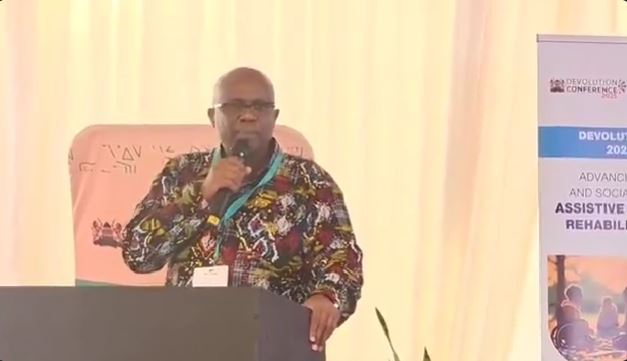

The Kenya Medical Supplies Authority (KEMSA) has reaffirmed its commitment
to making assistive technology (AT) devices more available, affordable, and
accessible to Kenyans, calling their provision a matter of human rights,
dignity, and social justice.
Speaking at the 2025 Devolution Conference in
Homa Bay County, themed Advancing Human Rights
and Social Justice through Assistive Technology and Rehabilitation Services,
KEMSA Chief Executive Officer Waqo Dulacha said inclusion must be anchored
within the health supply chain to ensure that no Kenyan is left behind.
“The Constitution of Kenya, the Persons with
Disabilities Act, 2025, and the UN Convention on the Rights of Persons with
Disabilities all recognize access to assistive technology and rehabilitation as
a human right,” Dulacha stated.
“Our role is to ensure these devices
reach every corner of the country reliably, efficiently, and sustainably.”
Under the global ATscale initiative, KEMSA has
been a lead implementing partner in shaping the assistive products market and
improving access through an optimized supply chain.
The authority has worked with the Ministry of Health, the Council of
Governors, the Clinton Health Access Initiative (CHAI), and other partners to standardise
specifications for AT devices, strengthen procurement frameworks, and integrate
AT products into its Logistics Management Information System (LMIS) for easier
county-level ordering.
KEMSA has distributed approximately 300 wheelchairs to 12 counties,
delivered newborn hearing screening equipment and audiometers to regional hubs,
and procured a wide range of eyeglasses and frames for national distribution.
It has also supported the operationalization of optical labs and outlets,
forming a hub-and-spoke model that links to lower-level health facilities.
To enhance sustainability, assistive devices are now embedded in KEMSA’s
LMIS, enabling real-time tracking, forecasting, and inventory management to
prevent stock-outs and ensure equitable distribution.
Selected staff are undergoing
specialized training in AT logistics and management to strengthen internal
technical capacity.
Dulacha underscored that county governments are essential in scaling and
sustaining AT services.
“We are working closely with County
Health Supply Chain Teams to ensure procurement and distribution respond to
local needs and are informed by data,” he said.
He called on counties to prioritise AT in their health budgets, adopt
standardized specifications and data tools, and collaborate with KEMSA to close
gaps in last-mile delivery.
“The ATscale project is not just about
products; it is about people,” Dulacha emphasized. “It is about restoring
mobility, enhancing communication, improving vision and hearing, and enabling
independence and participation.”
He thanked the Ministry of Health, the Council
of Governors, development partners, and organisations of persons with
disabilities for their leadership and collaboration, pledging that KEMSA would
continue to champion equity, efficiency, and inclusion in Kenya’s health
system.
“Access
to assistive technology is a matter of rights, dignity, and justice. We will
keep working to ensure every Kenyan who needs a device gets one,” Dulacha
concluded.














